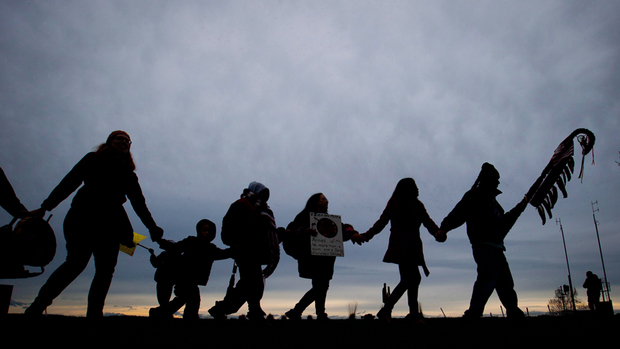Rate rises above 60% in Saskatchewan, Manitoba

Amber Hildebrandt, CBC News
Half of status First Nations children in Canada live in poverty, a troubling figure that jumps to nearly two-thirds in Saskatchewan and Manitoba, says a newly released report.
“The poverty rate is staggering. A 50 per cent poverty rate is unlike any other poverty rate for any other disadvantaged group in the country, by a long shot the worst,” said David Macdonald, a senior economist at the Canadian Centre for Policy Alternatives and co-author of the report.
The study released late Tuesday by the Canadian Centre for Policy Alternatives and Save the Children Canada found that the poverty rate of status First Nations children living on reserves was triple that of non-indigenous children.
In Manitoba and Saskatchewan, 62 and 64 per cent of status First Nations children were living below the poverty line, compared with 15 and 16 per cent among non-indigenous children in the provinces.
Poverty rates among status First Nations children are consistently higher across the country.
Co-author Daniel Wilson cautions that for many of them, “the depth of the poverty … is actually greater than the numbers themselves tell you.”
“Imagine any typical First Nations child living on a reserve,” said Wilson, a former diplomat and policy consultant on indigenous issues. “They’re waking up in an overcrowded home that may have asbestos, probably has mould, is likely in need of major repair, that does not have drinking water and they have no school to go to.”
The study is based on the 2006 census, the most recent data to provide a detailed portrait of poverty among all Canadians, at least until more of the 2011 census is released. The annual survey of labour and income dynamics typically used to assess poverty rates excludes those living on reserves.
The report notes that on-reserve First Nations children who are under federal jurisdiction fare far worse compared with indigenous children — Métis, Inuit and non-status First Nations — under provincial jurisdiction. For the latter group, the rate of poverty was 27 per cent, twice that of their non-indigenous counterparts.
That figure aligns closely with the poverty rate experienced by first-generation immigrant and refugee children, which sits at 33 per cent, as well as by visible minorities, which is at 22 per cent.
“Some of these differences in child poverty appear to be a matter of jurisdiction,” the report notes.
Provinces provide social services to Métis, Inuit and non-reserve First Nations, while Ottawa is responsible for funding social services on reserves.
Funding outpaced by population growth
But as the report notes, transfer payments from the federal government to reserves have been capped at a two per cent increase since 1996, making no allowances for the growth of population or needs.
“So if you have larger levels of poverty than you did in 1996, there’s no way for you to change the income supplement structure,” said Macdonald. “It’s a major constraint in terms of actually trying to deal with some of these issues.”
Persistent disadvantages faced by Canada’s aboriginal peoples in regard to education, employment, health and housing are well-documented, but the report suggests that the staggering poverty faced by indigenous children is preventable.
Lifting all the indigenous children up to the poverty line would cost $1 billion, while $580 million of that would suffice for 120,000 status First Nations alone, the study says.
“This is a situation that is developing. It has yet to be fully developed, so you’ve got kids that are going through very high levels of poverty, but if we take action now, these are things that could be rectified,” said Macdonald.
Save the Children Canada’s spokeswoman Cicely McWilliam said the organization became interested in studying poverty among indigenous children in Canada because it is currently building programs to work with the communities.
“Save the Children generally speaking works with the most marginalized wherever we work, the kids who need the most help,” said McWilliam.
Currently underway are three programs:
- Helping parents establish better bonds with infants, something that has been weakened by residential schools.
- Helping reclaim traditional languages that are increasingly being forgotten.
- A peer-based model to combat high rates of suicide.
For now, most of the work is being done with the Kenora Chiefs Advisory, which represents seven communities in northern Ontario.
“We’re in the building phase for all of these and we hope to have national programming both for development and for emergencies in the future,” said McWilliam.
About 426,000 indigenous children live in Canada, with most residing in Saskatchewan, Manitoba, Alberta, B.C. and Ontario. The indigenous population is one of the fastest growing in Canada.
